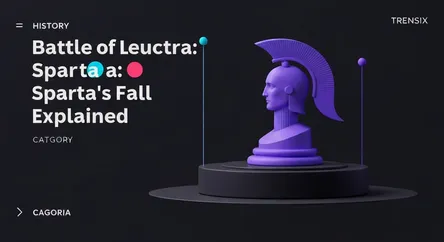History
Battle of Leuctra: Sparta's Fall Explained

Discover how the Battle of Leuctra in 371 BC ended Spartan dominance with revolutionary tactics, reshaping the power balance of ancient Greece forever.
What is it?
The Battle of Leuctra was a pivotal military engagement fought on July 6, 371 BC, between Thebes, leading the Boeotian League, and Sparta with its allies. Led by the brilliant general Epaminondas, the outnumbered Theban army confronted the Spartans, commanded by King Cleombrotus I, on a plain near Leuctra in Boeotia. The battle resulted in a stunning and decisive victory for Thebes. The outcome shattered the myth of Spartan invincibility that had dominated Greece for centuries and marked a turning point in ancient Greek history.
Why is it trending?
The Battle of Leuctra is renowned for the innovative and revolutionary tactics employed by Epaminondas. Breaking with traditional hoplite warfare, he massed his elite troops, including the Sacred Band, into a 50-rank deep column on his left wing. This concentrated force smashed into the Spartan right, where their best troops were positioned, and achieved a swift victory. This oblique battle formation was a tactical innovation that influenced military leaders for generations, including Philip II of Macedon and Alexander the Great, making it a key case study in military history.
How does it affect people?
The battle's aftermath permanently altered the political landscape of ancient Greece. It ended the era of Spartan hegemony, establishing a short-lived period of Theban dominance. The heavy losses suffered by Sparta's elite citizen-soldiers were catastrophic, leading to its decline as a major power. Following the victory, Thebes invaded Spartan territory and liberated the helots of Messenia, who had been enslaved for centuries, fundamentally restructuring Peloponnesian society. This power shift ultimately created a vacuum that facilitated the rise of Macedon and its eventual conquest of the Greek city-states.